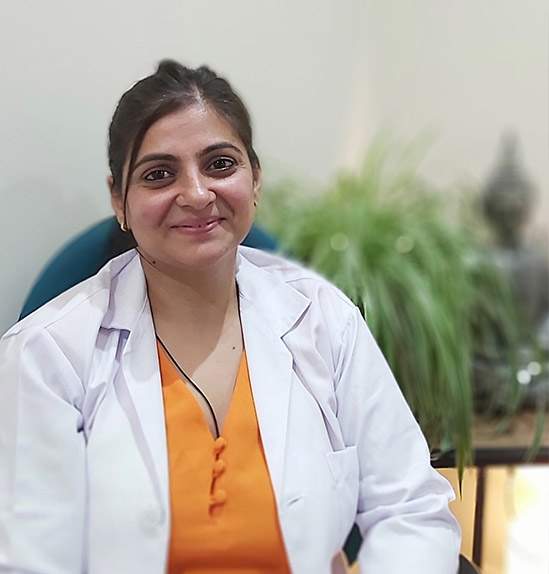Geetanjli Kansal (Also known as Anjli)
Dryness Treatment
Qualifications
- Diploma in Lifestyle and Nutrition
- Diploma in Ayurveda & Panchakarma
- Diploma in Ayurveda Beauty Therapy
- Diploma in Integrated Yoga Therapy

Ayurvedic Dryness treatment in Cippenham
What Are The Causes Of Dry Skin?
Most of the people have dry skin. Dry skin makes the skin look and feel rough, itchy, flaky or scaly. The location where these dry patches form varies from person to person. It's a common condition that affects people of all ages. Dry skin, also known as xerosis or xeroderma, has many causes, including cold or dry weather, sun damage, harsh soaps, and overbathing.

What is the definition of dry skin?
The term dry skin refers to when the skin does not have moisture to keep the skin soft and glowing. The dry skin is known as Xeroderma in medical science. Xerosis is used for severely dry skin. Dry skin feels rough. Patches on the skin that look like flakes and scaly. If you have dry skin, it can be or can not be itchy. Sometimes, the severe dry skin gets cracked and bleeds. There are different types of dry skin. The Dryness treatment in Berkshire is available at the best Ayurvedic clinic.
Types of Dry skin
There are different types of acne.
Contact dermatitis
When something gets in touch with your skin, it causes an irritant and an allergic reaction. The skin becomes dry, itchy, and red, and sometimes, you have rashes on the skin.
Eczema
A group of skin conditions that is responsible for the cause of red, bumpy and itchy patches of skin is known as Eczema. It can cause cracking on the skin, which increases the chance of infection. The common skin conditions that can worsen with irritants, allergens and stress.
Seborrheic dermatitis
Dry skin on your scalp can be the result of a condition known as dandruff in adults or cradle cap in infants. Seborrheic dermatitis can also cause dry, flaky skin patches on your face, chest, and inside creases of your arms, legs, or groin. Less commonly, it can also affect your navel. This type of dermatitis occurs when your body reacts to a normal yeast that grows on your skin.
Athlete’s foot
An athlete’s foot can mimic dry skin on your feet, but a fungus causes it. When this fungus grows on your body, it’s called ringworm. People who have athlete’s feet may have dry, flaky skin on the soles of their feet.
What are the causes for the dry skin?
There are different reasons that are responsible for the dry skin.
Age
As the years pass, the skin of moisture-producing oil glands dry up. It causes the fat and collagen in your skin. The dry skin further leads to thinning skin.
Climate
The temperature of your environment can affect your skin’s hydration. Climates that lack humidity, like desert-like climates or cold climates where there’s heavy wind, cause dry skin. Dry skin is often worse during the winter, but dry skin can occur year-round.
Health conditions and genetics
It could be more risky to get dry skin. If you are born with genes that make you more prone to it, or you have a health condition that causes dry skin as a symptom. Some conditions that lead to dry skin include allergies, eczema, diabetes and kidney disease.
Occupations
Certain professions can lead to dry skin, especially if you work outdoors, with chemicals or wash your hands frequently. Some professions that make you more likely to develop dry skin include healthcare providers, hairstylists and farmers.
If you have dry skin, then go to the best Ayurvedic practitioner at Ananta Ayurveda for the Ayurvedic Dryness treatment in Cippenham.



